Vinyl liner pools offer a great swimming experience to the users. With modern technology, long-lasting materials, and options for customization, pool liners are popular among pool owners. Vinyl pool liners can withstand strong sunlight, pool chemicals, and standing water. Without proper care and maintenance, vinyl pool liners may lose their good looks, charm, and soft feel.
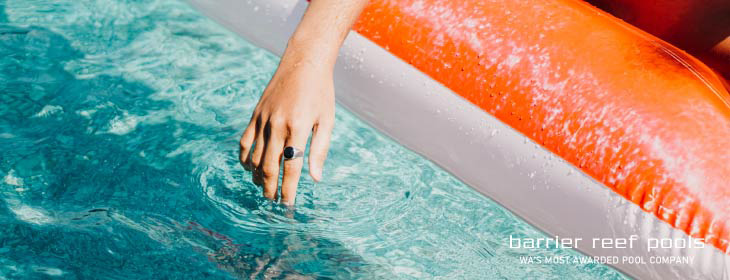
Although vinyl pool liners require less maintenance, they are prone to wear and tear unlike fibreglass pools and concrete pools. To keep a vinyl liner pool functional and attractive, here are some tips you could use.
Maintenance checklist
Vinyl pool liners require gentle cleaning. Rough brushing may result in tears. To keep it clear of dirt, debris, and undissolved chemicals, periodically brush the pool liner with a soft-bristle brush or sponge. The frequency of cleaning depends on how much dirt, leaves, etc. enter your pool or how often it is used. At least brushing your vinyl liner pool once a week will keep it maintained well in case it is used only by a few people.
Pool water chemistry matters
Your pool’s water chemistry can have an enormous effect on how lustrous and comfortable your vinyl remains for a long time. To keep it looking new, use the right ingredients to maintain the water chemistry. Pay attention to the pool’s alkalinity and pH as both are related. Maintain total alkalinity of 80-120 parts per million (ppm). Exceeding the level by a lot will result in unclear or cloudy water.
There may be signs of scaling if high amounts of minerals are present in the water. A scale-like coating may build up from the presence of lime or calcium, and other minerals discolouring the vinyl. Timely removal and maintaining the water chemistry are essential for avoiding this.
Modern vinyl pool liners are much more resistant to chemicals than before. However, to keep your vinyl liner looking new, ensure you do not use excessive chlorine in your pool. A very high level of chlorine can be corrosive and may affect the colour and pliability of the vinyl pool liner. To keep the vinyl liner looking as good as new for years, avoid chemical damage by carefully using pool chemicals in the right amount.
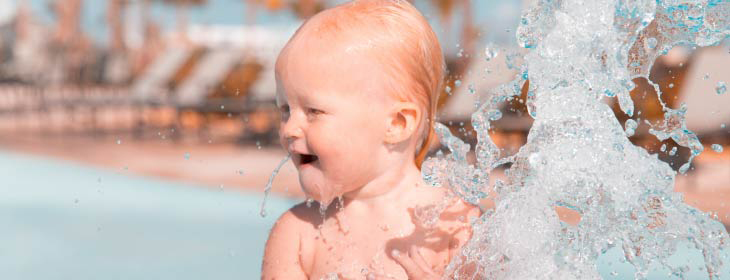
Use chlorine in the correct way
Chlorine can be corrosive and needs to be used in moderation while still keeping your pool water safe to use. To avoid harming the vinyl lining, pre-dissolving pool shock is advised. It is a simple process of dissolving the pool shock in a bucket of water, stirring it to mix well, and then slowly pouring it around the edge of your swimming pool.
Use pool shock only when required. Excessive use of chemicals can cause fading and decrease the softness of the vinyl liner. If the water is clean and you do not have any waterborne issues, shocking it every 4 to 6 weeks could be enough.
Do not use sharp objects in the pool
Vinyl pool liners are prone to tears. There are many wacky incidents that damage pool liners. People using a sharp pole to pole vault across the pool, kids playing with sharp toys, and people using blow dryers melting the liner are incidents that may harm it. Be careful about fireworks, barbecue, sharp tools, broken glass, and similar hot and sharp things around the pool.
This is one of the biggest disadvantages of vinyl pool liners as compared to fibreglass and concrete pools. Careful use is key to maintaining a hassle-free, good-looking pool liner for years.
Do not drain the pool completely
While cleaning or brushing your pool with a vinyl liner, avoid draining the pool. It is the first instinct to be wanting to drain the pool for better access to the surface. However, remember, it is not a good idea for vinyl liner pools. The water in the swimming pool holds the liner in place. It is the water pressure and weight that force the liner to stay flat and wrinkle-free. Once the water drains out the chances of the vinyl liner getting displaced become more, increasing the chances of wrinkles.
Draining the pool will shift the liner and may bunch it up, spoiling its aesthetics. This also increases the risk of damage while cleaning, and playing in the pool. Also, a wrinkled pool liner is annoying to clean and refill.
If there are damages and holes, you have no choice but to drain the entire pool water. You can avoid the same for regular cleaning purposes. Protect your investment in the pool by keeping these simple things in mind.
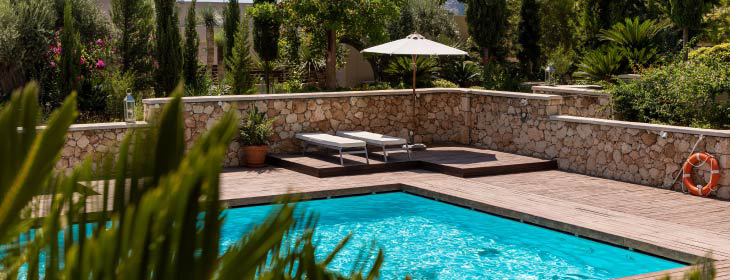
Pay attention to the waterline
Dirt, chemicals from cosmetics, and oils tend to build up at the waterline resulting in stains. A vinyl liner cleaning solution is a good choice to clean these marks at regular intervals. Do not let these stains sit for long or they may become stubborn and difficult to remove. Maintain the waterline at a certain height to avoid staining at different levels of the liner. Use products that are specially designed for vinyl liners. They will ensure your vinyl liner stays safe from fading and damage for a longer time.
Conclusion
Vinyl pool liners may save you some money initially but if you are looking for a more sturdy and permanent solution, fibreglass pools offer a better pool experience. Fibreglass pools are easier to maintain and don’t need frequent replacement like liner pools.
Vinyl pool liners may last up to a decade or more, but are prone to rips and tears and fading. Proper care, maintenance, and careful use can make them last longer and look good.
If you’re wondering if you could fit a vinyl pool lining to your existing, old, fibreglass pool, that’s a possibility but not an advisable one. It’s better to renovate or go for a new fibreglass pool because retrofitting fibreglass pools with vinyl linings has lots of installation and engineering issues. Vinyl pool linings for fibreglass pools have to be custom made which costs a few thousand dollars more.
Vinyl pool liners are more prone to algae growth compared to fibreglass pools and that means more maintenance efforts. If you already own a pool with vinyl liner, enjoy its beauty and comfort with proper care and precautions. If you are thinking of installing a new pool, keep the advantages of fibreglass pools in mind to make the right choice before investing your money.
Vinyl liner pools offer a great swimming experience to the users. With modern technology, long-lasting materials, and options for customization, pool liners are popular among pool owners. Vinyl pool liners can withstand strong sunlight, pool chemicals, and standing water. Without proper care and maintenance, vinyl pool liners may lose their good looks, charm, and soft feel.
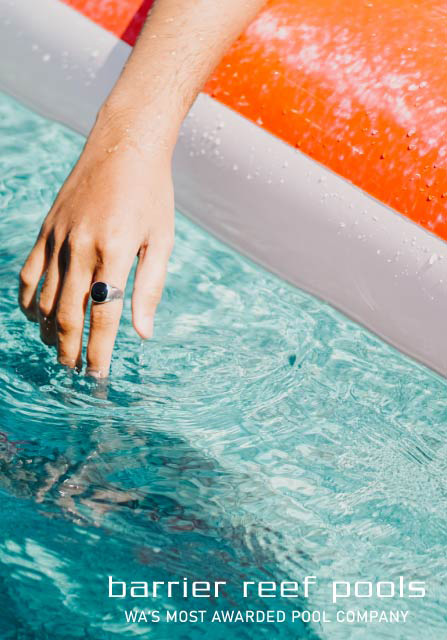
Although vinyl pool liners require less maintenance, they are prone to wear and tear unlike fibreglass pools and concrete pools. To keep a vinyl liner pool functional and attractive, here are some tips you could use.
Maintenance checklist
Vinyl pool liners require gentle cleaning. Rough brushing may result in tears. To keep it clear of dirt, debris, and undissolved chemicals, periodically brush the pool liner with a soft-bristle brush or sponge. The frequency of cleaning depends on how much dirt, leaves, etc. enter your pool or how often it is used. At least brushing your vinyl liner pool once a week will keep it maintained well in case it is used only by a few people.
Pool water chemistry matters
Your pool’s water chemistry can have an enormous effect on how lustrous and comfortable your vinyl remains for a long time. To keep it looking new, use the right ingredients to maintain the water chemistry. Pay attention to the pool’s alkalinity and pH as both are related. Maintain total alkalinity of 80-120 parts per million (ppm). Exceeding the level by a lot will result in unclear or cloudy water.
There may be signs of scaling if high amounts of minerals are present in the water. A scale-like coating may build up from the presence of lime or calcium, and other minerals discolouring the vinyl. Timely removal and maintaining the water chemistry are essential for avoiding this.
Modern vinyl pool liners are much more resistant to chemicals than before. However, to keep your vinyl liner looking new, ensure you do not use excessive chlorine in your pool. A very high level of chlorine can be corrosive and may affect the colour and pliability of the vinyl pool liner. To keep the vinyl liner looking as good as new for years, avoid chemical damage by carefully using pool chemicals in the right amount.

Use chlorine in the correct way
Chlorine can be corrosive and needs to be used in moderation while still keeping your pool water safe to use. To avoid harming the vinyl lining, pre-dissolving pool shock is advised. It is a simple process of dissolving the pool shock in a bucket of water, stirring it to mix well, and then slowly pouring it around the edge of your swimming pool.
Use pool shock only when required. Excessive use of chemicals can cause fading and decrease the softness of the vinyl liner. If the water is clean and you do not have any waterborne issues, shocking it every 4 to 6 weeks could be enough.
Do not use sharp objects in the pool
Vinyl pool liners are prone to tears. There are many wacky incidents that damage pool liners. People using a sharp pole to pole vault across the pool, kids playing with sharp toys, and people using blow dryers melting the liner are incidents that may harm it. Be careful about fireworks, barbecue, sharp tools, broken glass, and similar hot and sharp things around the pool.
This is one of the biggest disadvantages of vinyl pool liners as compared to fibreglass and concrete pools. Careful use is key to maintaining a hassle-free, good-looking pool liner for years.
Do not drain the pool completely
While cleaning or brushing your pool with a vinyl liner, avoid draining the pool. It is the first instinct to be wanting to drain the pool for better access to the surface. However, remember, it is not a good idea for vinyl liner pools. The water in the swimming pool holds the liner in place. It is the water pressure and weight that force the liner to stay flat and wrinkle-free. Once the water drains out the chances of the vinyl liner getting displaced become more, increasing the chances of wrinkles.
Draining the pool will shift the liner and may bunch it up, spoiling its aesthetics. This also increases the risk of damage while cleaning, and playing in the pool. Also, a wrinkled pool liner is annoying to clean and refill.
If there are damages and holes, you have no choice but to drain the entire pool water. You can avoid the same for regular cleaning purposes. Protect your investment in the pool by keeping these simple things in mind.
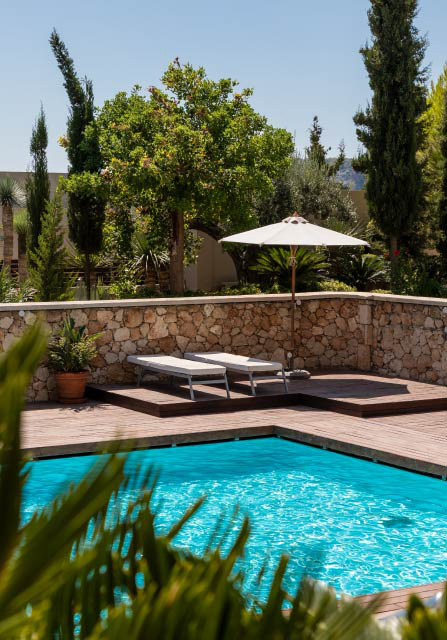
Pay attention to the waterline
Dirt, chemicals from cosmetics, and oils tend to build up at the waterline resulting in stains. A vinyl liner cleaning solution is a good choice to clean these marks at regular intervals. Do not let these stains sit for long or they may become stubborn and difficult to remove. Maintain the waterline at a certain height to avoid staining at different levels of the liner. Use products that are specially designed for vinyl liners. They will ensure your vinyl liner stays safe from fading and damage for a longer time.
Conclusion
Vinyl pool liners may save you some money initially but if you are looking for a more sturdy and permanent solution, fibreglass pools offer a better pool experience. Fibreglass pools are easier to maintain and don’t need frequent replacement like liner pools.
Vinyl pool liners may last up to a decade or more, but are prone to rips and tears and fading. Proper care, maintenance, and careful use can make them last longer and look good.
If you’re wondering if you could fit a vinyl pool lining to your existing, old, fibreglass pool, that’s a possibility but not an advisable one. It’s better to renovate or go for a new fibreglass pool because retrofitting fibreglass pools with vinyl linings has lots of installation and engineering issues. Vinyl pool linings for fibreglass pools have to be custom made which costs a few thousand dollars more.
Vinyl pool liners are more prone to algae growth compared to fibreglass pools and that means more maintenance efforts. If you already own a pool with vinyl liner, enjoy its beauty and comfort with proper care and precautions. If you are thinking of installing a new pool, keep the advantages of fibreglass pools in mind to make the right choice before investing your money.




